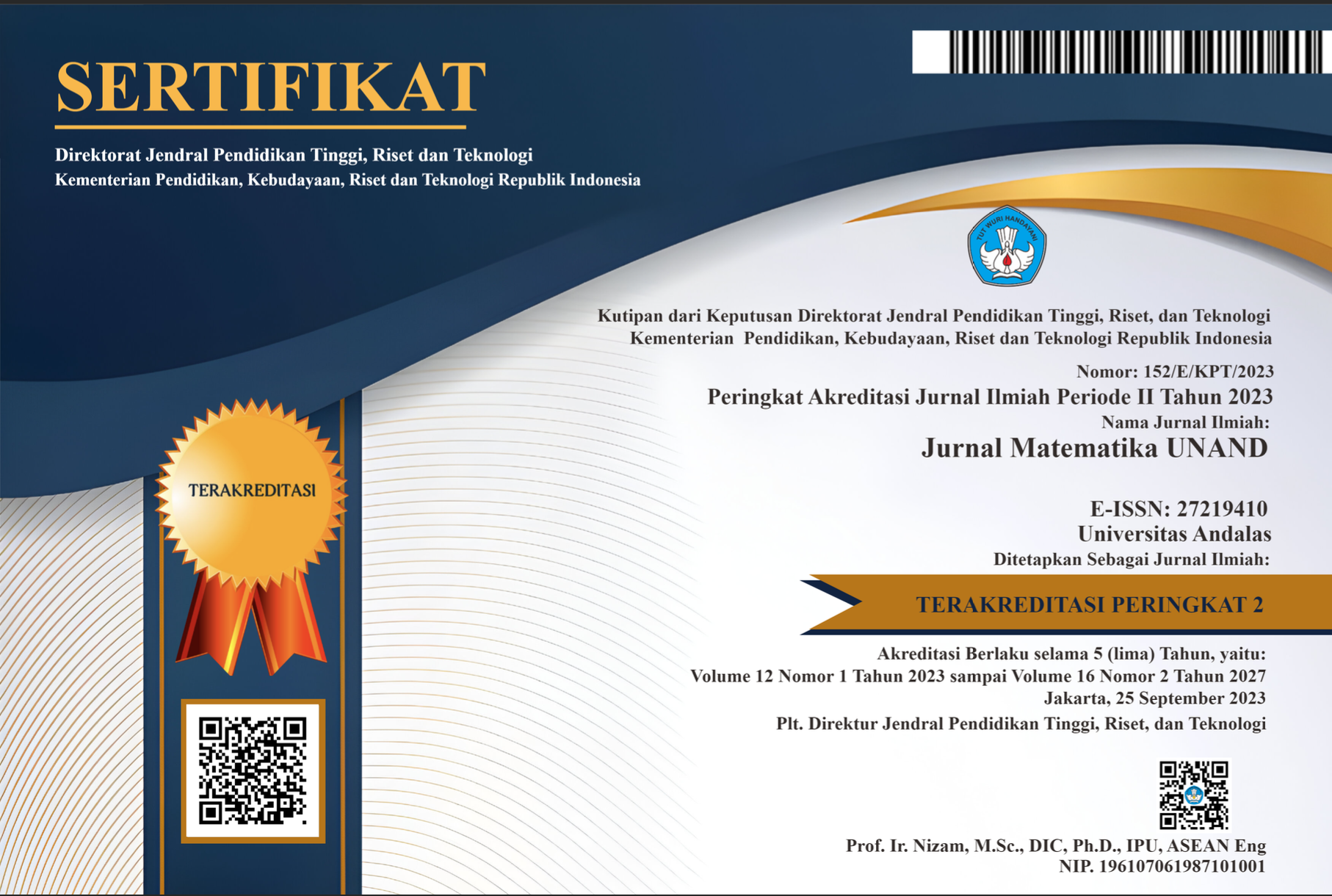MODELING THE PROFITABILITY OF TELECOMMUNICATION SUB-SECTOR STOCKS USING PANEL DATA REGRESSION ANALYSIS
Abstract
Keywords
Full Text:
PDFReferences
A. Widarjono, Ekonometrika Pengantar dan Aplikasinya Disertai Panduan Eviews, 4 ed. Yogyakarta: UPP STIM YKPN, 2017.
C. Hsiao, Analysis of panel data, 2nd ed. New York: Cambridge University Press, 2003.
D. L. Kusnandar dan V. I. Bintari, “Perbandingan abnormal return saham sebelum dan sesudah perubahan waktu perdagangan selama pandemi Covid-19,” Jurnal Pasar Modal dan Bisnis, vol. 2, no. 2, hlm. 195–202, 2020.
V. Lalwani dan V. V. Meshram, “Stock market efficiency in the time of COVID-19: evidence from industry stock returns,” International Journal of Accounting & Finance Review, vol. 5, no. 2, hlm. 40–44, 2020.
E. F. Brigham dan J. F. Houston, Fundamentals of Financial Management: Dasar-Dasar Manajemen Keuangan. Jakarta: Salemba Empat, 2006.
J. Sriyana, Metode Regresi Data Panel (Dilengkapi Analisis Kinerja Bank Syariah di Indonesia). Yogyakarta: Ekonisia, 2014.
D. N. Gujarati, Basic Econometrics, 4 ed. New York: The McGraw−Hill Companies, 2004.
D. N. Gujarati dan D. C. Porter, Dasar-dasar Ekonometrika Edisi 5 Buku 2. Jakarta: Salemba Empat, 2013.
W. W. Winarno, Analisis Ekonometrika dan Statistika dengan EViews. Yogyakarta: UPP STIM YKPN, 2013.
Kasmir, Analisis Laporan Keuangan, 1 ed. Jakarta: Raja Grafindo Persada, 2014.
Kasmir, Pengantar Manajemen Keuangan. Jakarta: Kencana, 2010.
“Inflasi.” https://www.bi.go.id/id/fungsi-utama/moneter/inflasi/default.aspx (diakses 17 Agustus 2022).
“Badan Pusat Statistik.” https://www.bps.go.id/subject/3/inflasi.html#subjekViewTab2 (diakses 17 Agustus 2022).
DOI: https://doi.org/10.25077/jmua.11.4.246-257.2022
Refbacks
- There are currently no refbacks.
Copyright (c) 2022 Jurnal Matematika UNAND

This work is licensed under a Creative Commons Attribution-ShareAlike 4.0 International License.

Ciptaan disebarluaskan di bawah Lisensi Creative Commons Atribusi-BerbagiSerupa 4.0 Internasional.










